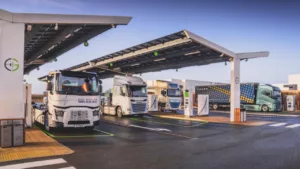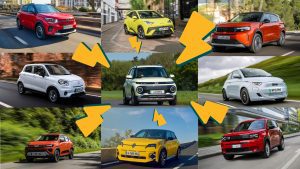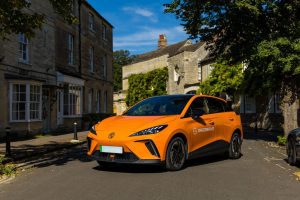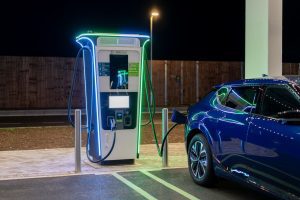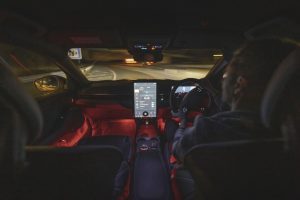


A classic car with an internal combustion engine is responsible for changing my life; personally, professionally and unequivocally. It belonged to my late grandfather, a conservative man with impeccable manners whose willpower to exercise self-restraint lessened significantly when he was behind the wheel.
“The country air is like champagne,” he wrote of the joy of driving top-down in his 1960 MGA Roadster – a racy retirement present to himself. So jubilant was such an occasion, which defined so many sunny days before he passed away at the age of 92, he’d be content enough to let the wind ruffle the wave of his hair which was always so neatly coiffed.
When I became custodian of the keys in 2016, I rebuilt my life without him, but with his car; because what I inherited was a purpose. As the daughter of a mechanic who spent over fifteen years as a national newspaper journalist and editor before going freelance, I finally began to learn the tricks of my father’s trade and became an advocate for classic cars.

Writing on subjects such as the preservation of heritage skills, the potential of battery electrification and synthetic fuels, the importance of specialist apprenticeships and diversification within the automotive industry, I have an understanding of the sector’s social, economical, political and environmental complexities. And, as the first female opinion columnist in Practical Classics magazine and presenter of a new female-led classic car restoration show on Dave, I fight for fairer and better representation of women in the space.
The respect and adoration I have for my late grandfather’s classic car has propelled the trajectory of my career, and with that comes a responsibility to answer provocative questions, such as, what do I think about the electrification of classic cars?
Having such a deeply emotional relationship with my own, one might assume my response would be defensive, that I might consider it a sacrilegious act – and perhaps, in some cases I do – but as a niche yet burgeoning market, it’s important to understand why there is a growing demand and what the long-term implications could be.
Concerns over air pollution and the climate crisis rank highly on the list of reasons why battery power is deemed so appealing, and although purists may shudder at the thought, replacing an engine with an electric motor and batteries is one way to address both health and climate challenges.
Rather than replace old cars with completely new ones, we can turn them into EVs and save a portion of modern classics from becoming scrap. In 2021, a yellow 2004 Fiat Multipla, which was worth less than £1,000, was converted by Vauxhall-based London Electric Cars because the family who owned it couldn’t bear to say goodbye. Conversions can improve a vehicle’s speed, acceleration and longevity.
“Some people who are steadfast in their belief that there is no other way for these cars to be are looking for an argument,” confides William “Will” Heynes, who founded his Jaguar preservation and restoration workshop – William Heynes Ltd – in 2021, “…but you can’t quash the idea until you’ve done proper research and driven one. Then you can have an opinion.”
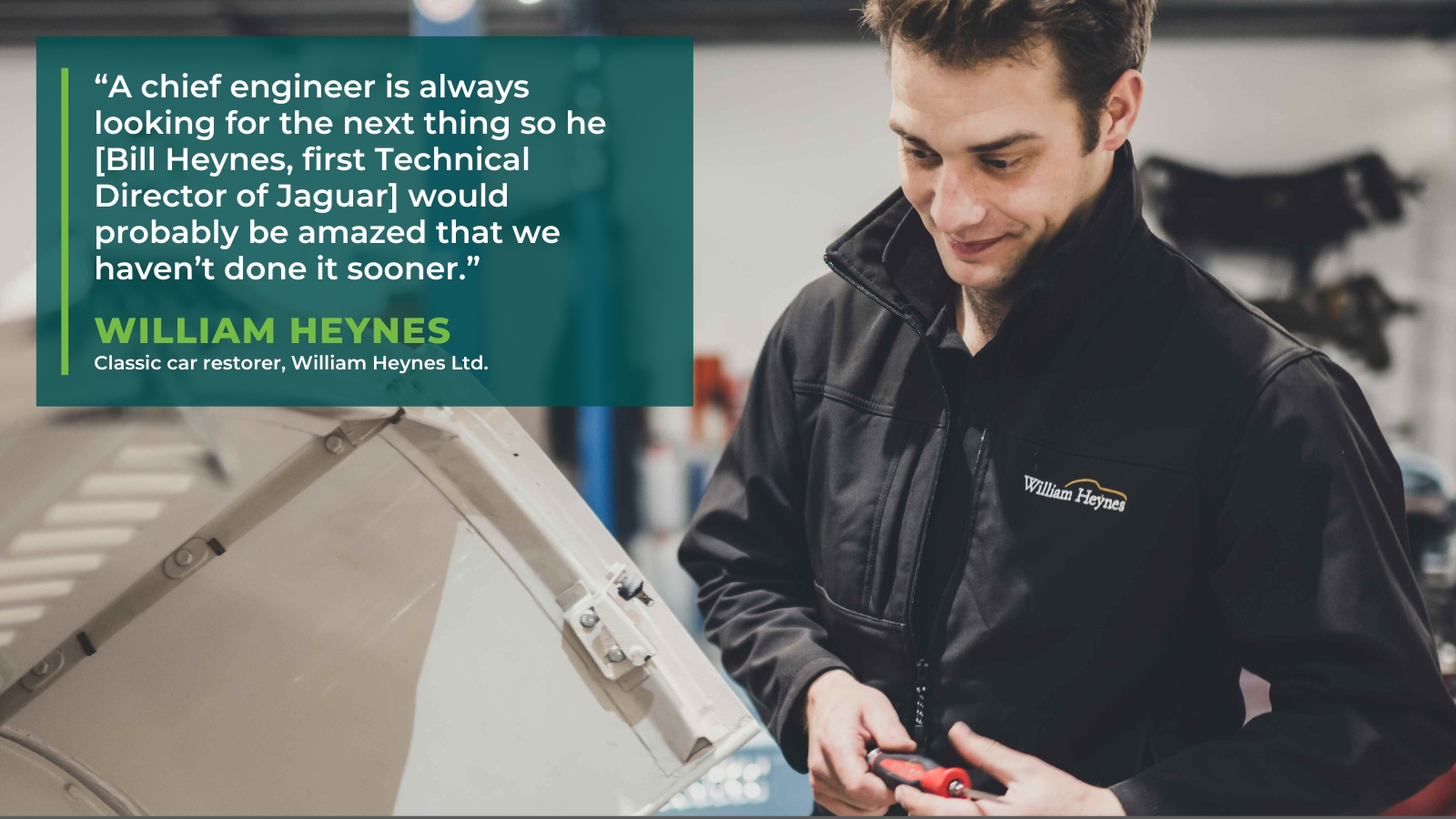
As the grandson of Jaguar’s first Chief Engineer and Technical Director, William “Bill” Heynes, who was responsible for the evolution of some of the British manufacturer’s finest cars, including the XK120, C-Type, D-type and E-type, Will’s investment in ‘classic’ classics, like me, is intertwined with a legacy, so we are not easily convinced. “I think he’d be pro it,” says Will, when I ask him to speculate what point of view his grandfather might have taken, “a chief engineer is always looking for the next thing and he’d probably be amazed that we haven’t done it sooner.”
Will and I share the view that there needs to be more than one solution to moving classic cars without burning fossil fuels in the future. The challenge of making synthetic, truly sustainable fuel affordable and at scale is significant, so battery power must be accepted as part of the plan. And from a pragmatic standpoint, specialists in vehicle electrification bring revenue to the sector.
Even without internal combustion engines, classics will still require TLC and restoration. The welders, the fabricators, upholsterers, machinists and pros of instrument repair, all of whom are highly-skilled conservationists, won’t find themselves with idle hands. Indeed, with EV classics you’re not chasing an existing market, you’re curating a new one.

“There is a completely new population of classic car owners, who aren’t owners yet, but will be because in their headspace, electric is the way to go,” says Will, who is a trustee of Starter Motor, a charity focused on inspiring young people to learn about classic and heritage transport.
“There will be school children whose parents drive a Tesla or equivalent that wouldn’t even comprehend the thought of driving a classic or going into an industry that they think is damaging the planet. We need to pre-empt how the next generation is going to engage.” Keeping an open mind is essential.
Calum McLean, a serial classic car owner who lives in London, put an electric drivetrain in his 1971 VW Beetle 1302S, in part, so that it would appeal to his children, aged 10 and 14. “Now it’s electric, they think it’s great.”
With a 120bhp HyPer 9 AC motor and 32KWh battery pack beneath its vintage bodywork, “it’s twice as fast, twice as powerful and you get torque from 0 revs,” the EV Beetle is considered the family’s “super cool” city runaround. It has approximately 120 miles of range. In contrast, before the ultra-low emission zone came into effect in the capital, Calum ran a “gassy” 1987 Mercedes-Benz 560SEC 5.6-litre V8. “I loved it, but my kids gave me a hard time about how polluting it was; my wife felt much the same.”
Calum carried out the Beetle’s conversion himself, spending an estimated £22,000 on the components. A specialist will charge around £30,000 to upwards of £100,000, depending on the model and labour required. “I chose a Beetle because it felt OK on my moral compass,” says the father of two, who would think twice about converting something rare or with a compelling heritage.
“So many of them were made. Nobody has ever said, ‘what have you done?’ It’s clean, it’s green, it keeps up with traffic, anyone can drive it and no one has to worry about whether it’s going to break down. It’s effectively been upcycled, I think that makes it attractive to a wider audience. The kids who have never seen one before think it’s absolutely amazing.” The reaction, he assures, has been universally positive.
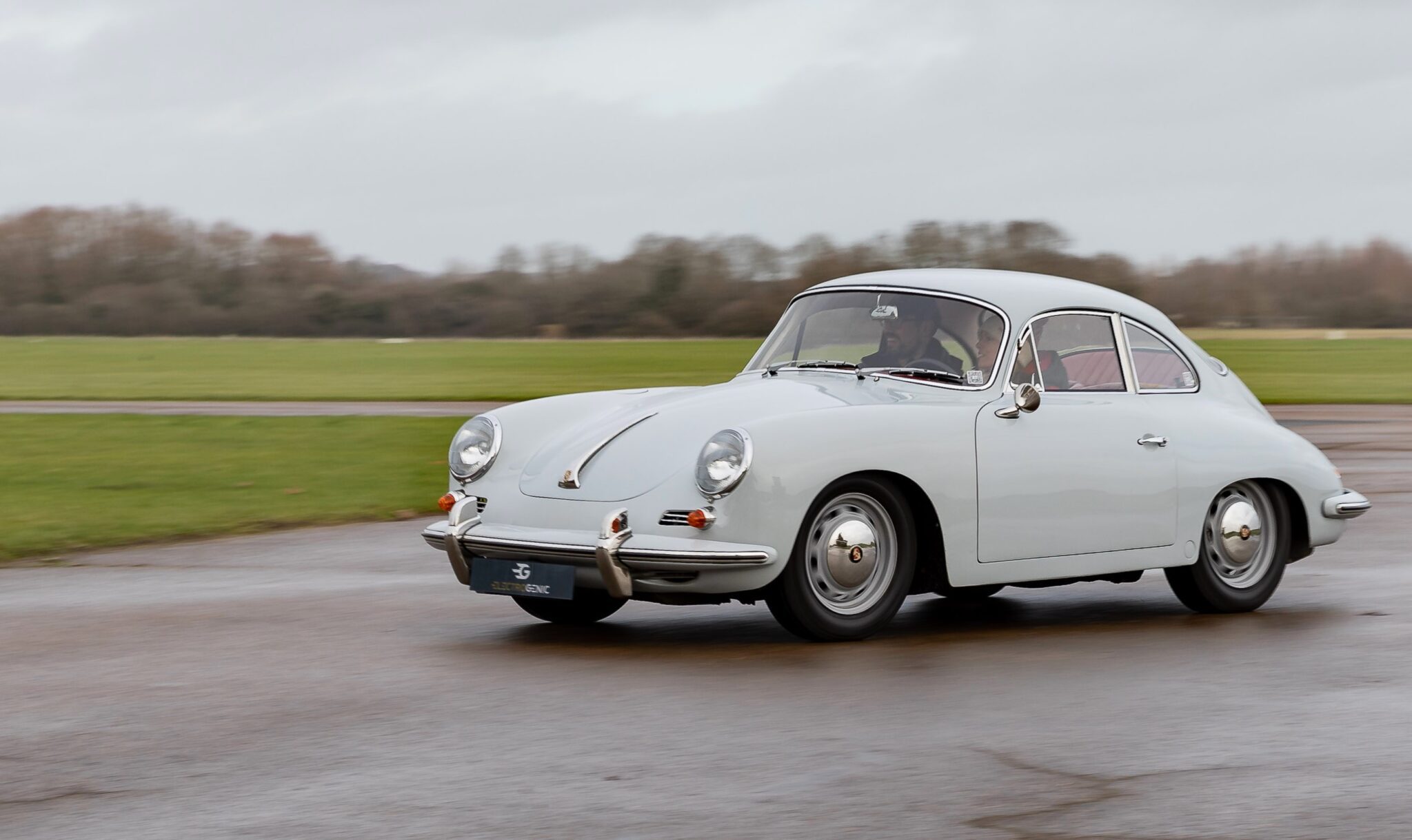
“I really wanted to hate it,” says Will, after being introduced to an E-Type that has undergone the switch, “but,” he continues, “I really enjoyed it.” Poor restorations and ill-advised modifications, he says, taint the classic Jaguar experience, but Electrogenic, the Oxfordshire-based converter who lent him a plug-in version, takes a bespoke, holistic approach to re-powering the vehicles within their care.
“Nobody else had done it properly, that was my motivation,” says co-founder Steve Drummond, “we convert cars that have never been converted before.” So exceptional is the company’s understanding of the benefits and constraints of electric propulsion that the British Army has enlisted their help.
Much of their work is carried out on a need-to-know basis, but perhaps in a bid to attract Generation Z recruits who are conscious of their employers’ attitude towards climate change, they can talk about the fleet of Land Rovers they’ve re-engineered to all-electric drive. Their off-roading capabilities and lack of engine noise boosts their stealth capability on the battlefield.
When I visit the Electrogenic workshop, I spy a Mazda MX5, DeLorean and Citroen DS, undergoing their EV transformation. The latest arrival is a race-prepped Sierra Cosworth gearbox; its fate is to take receipt of a 240KWh electric motor. It’s a secret project, teases Steve, “it’s going to be insane.”
To make conversions reversible, should someone change their mind, Electrogenic integrate powertrains sympathetically into a car’s existing structure. “Nothing is cut, nothing is drilled.”
To prove it, Steve lifts the bonnet of a 1929 Rolls‑Royce Phantom II. Once the domain of a 7.7-litre pushrod straight-six, it now stows a 93kWh battery that has been concealed by a hand-crafted aluminium cowling. It is a breathtaking, functional work of art.
“This is how we like to think he [Henry Royce] might have made it, had he made it electric; it’s a fully bespoke process. We develop the software, we spec the setup and because of that we can get a vehicle to do whatever we want. We can turn those designs into off-the-shelf kits.” The latest addition, for a classic Mini, has a price tag of £16.5k.
Sadly, Electrogenic’s first EV MGA isn’t available to come out and play, but as compensation, rather than send me off on a 15-minute pootle round the block in the company’s first plug-in Porsche 356C (swit swoo) Steve allows me a more energetic outing on the test track at Bicester Heritage.
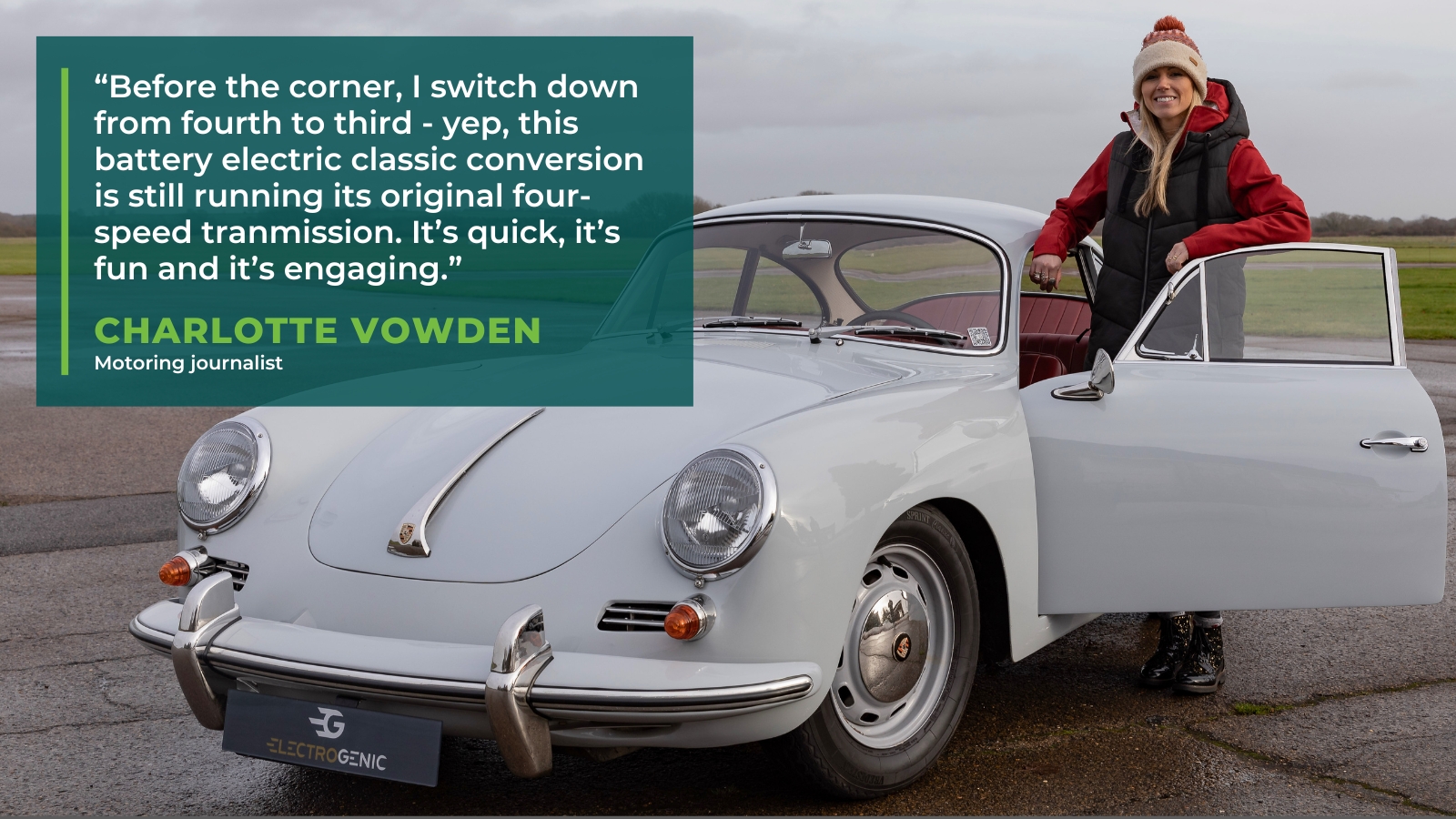
Charging along the circuit’s straight, the wind whistles a tune. Untouched, save for the air-cooled coupé’s powertrain, it’s quiet in flight, but as we sweep and swerve around the course, the 356C’s frame audibly responds. The creaks and vibrations are characteristic of a 1964 car that’s rebutting retirement.
On a corner, I switch down from fourth to third – yes, it’s running with its original four-speed transmission – and once we’re out of it, the 120bhp car moves off again without a fuss. It’s quick, it’s fun and it’s engaging. Converted for ease of use, the 356C is a masterpiece of design and engineering.
I think of my late grandfather and how he would have seized the opportunity to experience such a unique and controversial drive. What a marvellous talking point between us it would have been.
